BMW iX vs Kia EV9 – Which model is better for everyday use?
Both models have their strengths – but which one suits you more?
Compare performance, efficiency, price and space directly: BMW iX or Kia EV9?
Costs and Efficiency:
Price and efficiency are often the first things buyers look at. Here it becomes clear which model has the long-term edge – whether at the pump, the plug, or in purchase price.
Kia EV9 has a clearly perceptible advantage in terms of price – it starts at 53100 £, while the BMW iX costs 71600 £. That’s a price difference of around 18437 £.
In terms of energy consumption, the advantage goes to the BMW iX: with 17.80 kWh per 100 km, it’s minimal more efficient than the Kia EV9 with 19.50 kWh. That’s a difference of about 1.70 kWh.
As for range, the BMW iX performs to a small extent better – achieving up to 701 km, about 138 km more than the Kia EV9.
Engine and Performance:
Under the bonnet, it becomes clear which model is tuned for sportiness and which one takes the lead when you hit the accelerator.
When it comes to engine power, the BMW iX has a evident edge – offering 659 HP compared to 508 HP. That’s roughly 151 HP more horsepower.
In acceleration from 0 to 100 km/h, the BMW iX is distinct quicker – completing the sprint in 3.80 s, while the Kia EV9 takes 4.60 s. That’s about 0.80 s faster.
In terms of top speed, the BMW iX performs a bit better – reaching 250 km/h, while the Kia EV9 tops out at 220 km/h. The difference is around 30 km/h.
There’s also a difference in torque: BMW iX pulls evident stronger with 1015 Nm compared to 740 Nm. That’s about 275 Nm difference.
Space and Everyday Use:
Cabin size, boot volume and payload all play a role in everyday practicality. Here, comfort and flexibility make the difference.
Seats: Kia EV9 offers noticeable more seating capacity – 7 vs 5.
In curb weight, Kia EV9 is hardly perceptible lighter – 2392 kg compared to 2525 kg. The difference is around 133 kg.
In terms of boot space, the BMW iX offers evident more room – 500 L compared to 333 L. That’s a difference of about 167 L.
In maximum load capacity, the Kia EV9 performs noticeable better – up to 2393 L, which is about 643 L more than the BMW iX.
When it comes to payload, Kia EV9 barely noticeable takes the win – 615 kg compared to 575 kg. That’s a difference of about 40 kg.
Who wins the race?
The BMW iX proves to be leaves the rival little chance and therefore becomes our DriveDuel Champion!
BMW iX is the better all-rounder in this comparison.

BMW iX
BMW iX
The BMW iX presents a bold step into the future of electric vehicles, combining eco-friendly performance with luxurious comfort. Its sleek design and state-of-the-art technology offer a driving experience that feels both modern and sophisticated. Inside, high-quality materials and an intuitive interface ensure that driver and passengers alike enjoy an immersive journey.
details @ press.bmwgroup.com
@ press.bmwgroup.com
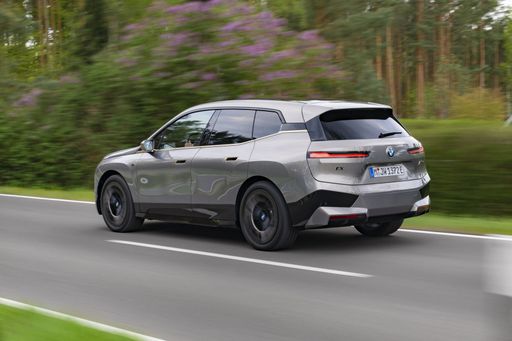 @ press.bmwgroup.com
@ press.bmwgroup.com
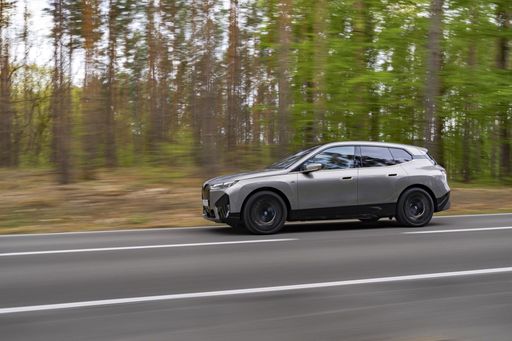 @ press.bmwgroup.com
@ press.bmwgroup.com
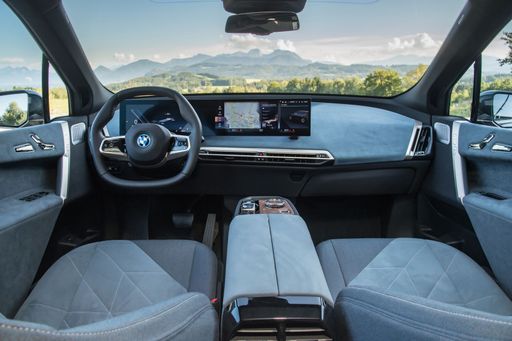 @ press.bmwgroup.com
@ press.bmwgroup.com
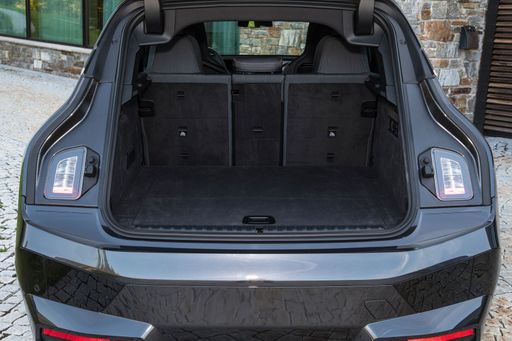 @ press.bmwgroup.com
@ press.bmwgroup.com
Kia EV9
The Kia EV9 represents a bold step forward in the automotive world with its distinctive design and futuristic appeal. This all-electric SUV promises to provide a spacious and comfortable cabin experience, making it ideal for families and long journeys. With its emphasis on sustainability and advanced technology, the EV9 aims to redefine the standards for electric vehicles in its category.
details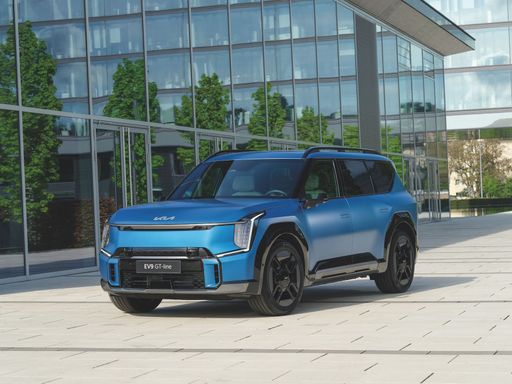 @ press.kia.com
@ press.kia.com
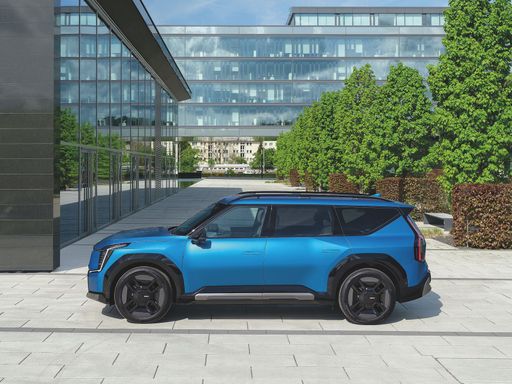 @ press.kia.com
@ press.kia.com
 @ press.kia.com
@ press.kia.com
 @ press.kia.com
@ press.kia.com
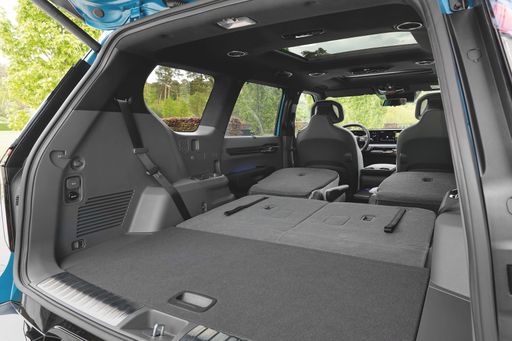 @ press.kia.com
@ press.kia.com

|

|
|
|
|
Costs and Consumption |
|
|---|---|
|
Price
71600 - 107100 £
|
Price
53100 - 78000 £
|
|
Consumption L/100km
-
|
Consumption L/100km
-
|
|
Consumption kWh/100km
17.8 - 20.6 kWh
|
Consumption kWh/100km
19.5 - 22.8 kWh
|
|
Electric Range
600 - 701 km
|
Electric Range
443 - 563 km
|
|
Battery Capacity
96 - 109.6 kWh
|
Battery Capacity
76.1 - 99.8 kWh
|
|
co2
0 g/km
|
co2
0 g/km
|
|
Fuel tank capacity
-
|
Fuel tank capacity
-
|
Dimensions and Body |
|
|---|---|
|
Body Type
SUV
|
Body Type
SUV
|
|
Seats
5
|
Seats
6 - 7
|
|
Doors
5
|
Doors
5
|
|
Curb weight
2525 - 2655 kg
|
Curb weight
2392 - 2664 kg
|
|
Trunk capacity
500 L
|
Trunk capacity
333 L
|
|
Length
4965 mm
|
Length
5010 - 5015 mm
|
|
Width
1970 mm
|
Width
1980 mm
|
|
Height
1688 - 1695 mm
|
Height
1755 - 1780 mm
|
|
Max trunk capacity
1750 L
|
Max trunk capacity
2318 - 2393 L
|
|
Payload
505 - 575 kg
|
Payload
542 - 615 kg
|
Engine and Performance |
|
|---|---|
|
Engine Type
Electric
|
Engine Type
Electric
|
|
Transmission
Automatic
|
Transmission
Automatic
|
|
Transmission Detail
Reduction Gearbox
|
Transmission Detail
Reduction Gearbox
|
|
Drive Type
All-Wheel Drive
|
Drive Type
All-Wheel Drive, Rear-Wheel Drive
|
|
Power HP
408 - 659 HP
|
Power HP
204 - 508 HP
|
|
Acceleration 0-100km/h
3.8 - 5.1 s
|
Acceleration 0-100km/h
4.6 - 9.4 s
|
|
Max Speed
200 - 250 km/h
|
Max Speed
185 - 220 km/h
|
|
Torque
700 - 1015 Nm
|
Torque
350 - 740 Nm
|
|
Number of Cylinders
-
|
Number of Cylinders
-
|
|
Power kW
300 - 485 kW
|
Power kW
150 - 374 kW
|
|
Engine capacity
-
|
Engine capacity
-
|
General |
|
|---|---|
|
Model Year
2025
|
Model Year
2023 - 2025
|
|
CO2 Efficiency Class
A
|
CO2 Efficiency Class
A
|
|
Brand
BMW
|
Brand
Kia
|
Is the BMW iX offered with different drivetrains?
The BMW iX is offered with All-Wheel Drive.
The prices and data displayed are estimates based on German list prices and may vary by country. This information is not legally binding.
